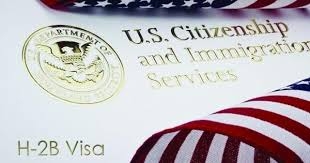The US remains the top choice among Indians leaving their country after renouncing citizenship…reports Asian Lite News
The massive green card backlog leading to longer wait for permanent residency, limited availability of non-immigrant H-1B visas and threat of layoffs by top tech giants — the tide seems to be inexorably turning against Indians with American dreams.
Yet, if numbers are to be believed, the US remains the top choice among Indians leaving their country after renouncing citizenship, according to a 2021 government data.
Of the 163,370 individuals who gave up citizenship of India in 2021, a major chunk of 78,284 chose the US as their adoptive country with many saying that the American citizenship was most sought after for “reasons personal to them”.
A record number of Indian students chose the United States to pursue higher education with nearly 21 per cent of the over one million foreign students studying in the US being Indians, according to a recent US High Commission data.
Almost 200,000 Indian students chose America as their higher education destination in the 2021-22 academic year — a 19 per cent increase over the previous year, according to the Open Doors Report released this year.
Unlike Sundar Pichai, who completed his bachelor’s degree in India before heading abroad to take on Google, most students in India now want to leave for foreign shores immediately after finishing their class 12th. “The earlier I start, the better it is,” Snehal Sinha, a 16-year-old commerce student with American dreams, told IANS.
For students and techies in a country with a billion-plus population, the US still means a land of opportunity, offering world-class education, better job prospects, and a chance to build a better life.
The country is home to nearly 4,000 universities known for their high academic standards. An international student has a wide range of choices, regardless of the state in which they choose to study.
India’s domestic education system has grown to be one of the largest in the world, with close to 52,000 institutions. But, despite this expanded access, postgraduate opportunities are still few and far between in the country, which is one of the big reasons students look overseas, notes American International Recruitment Council (AIRC).
As of 2018-19, only 35 per cent of Indian higher education institutions offered postgraduate programs, and 2.5 per cent offered PhD programs, unlike the US with its strong graduate programs and post-study work opportunities.
More than 77 per cent of Indian students in the US studied STEM in the 2020-21 academic year with maths and computer science being the most popular STEM fields, accounting for 35 per cent of Indians in 2020-21.
In 2022, the White House announced additional STEM fields eligible for Optional Practical Training STEM Extension, which provides students with an opportunity to find off-campus employment or an internship within their field of study.
Optional Practical Training allows overseas students with an F-1 visa to work up to 12 months during or after the study duration. Students with STEM degrees get another 12 months and can work up to 24 months.
Another program, the Curricular Practical Training gives international students authorisation to gain employment training and to work in paid internships positions.
The success stories of Indian-origin CEOs Satya Nadella, Shantanu Narayen, and Arvind Krishna have also played a role in attracting Indian students and techies who want to make a mark in Silicon Valley.
An opportunity to “work onsite” and “earn in dollars” has been a big lure for Indian engineers ever since the tech boom swept the country almost two decades ago, says a Quartz report.
It adds that more than anything, a US visa for an Indian is a sign of career progression for an IT professional, often valued even more than an increment.
There are more than 400,000 non-US residents working in the US via the H-1B visa program, and of these, roughly three-quarters are from India, especially in the IT sector.
A lot of Indian IT professionals find US work culture more planned and less ambiguous in comparison to India’s, in addition to better labour laws and pay scale.
In the US, often there is no requirement to notify the employer before leaving the job, as either party can terminate the relationship without notice.
Indian-American households have the single-highest income level in the country, which is twice more than the income of the US population, a 2020 Columbia Business School study, says.
After Prime Minister Narendra Modi’s state visit last month, the US said it will ease H-1B visas for skilled Indians and clear the backlog as part of a pilot programme, which will allow Indians to renew the non-immigrant visas in the US without having to travel abroad.

